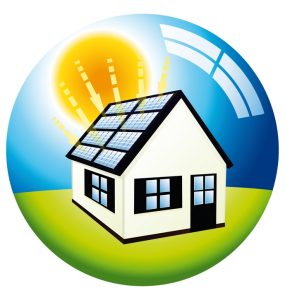 Renewable energy is defined as energy generated from natural resources which can be easily replenished. Some examples of renewable energy are solar, wind and biomass just to name a few. Before the industrial revolution, most of the world relied on this type of energy to generate power; however, it quickly died off when coal power plants began popping up throughout the world. Thankfully, though, renewable energy sources are back on the agenda, as more and more countries are investing heavily into their use and technology. Here we’ll take a closer look at what’s in store for renewable energy in the future and what we can do to take full advantage of it.
Renewable energy is defined as energy generated from natural resources which can be easily replenished. Some examples of renewable energy are solar, wind and biomass just to name a few. Before the industrial revolution, most of the world relied on this type of energy to generate power; however, it quickly died off when coal power plants began popping up throughout the world. Thankfully, though, renewable energy sources are back on the agenda, as more and more countries are investing heavily into their use and technology. Here we’ll take a closer look at what’s in store for renewable energy in the future and what we can do to take full advantage of it.
Coal Power Plants
Many people are surprised to learn that renewable energy sources have been used long before the surge in coal power plants. During this time, trees were chopped down and the wood was sent off to plants where it was burned for power. Although this may not be as efficient as solar, it’s still considered renewable because of the fact that trees can be regrown. Of course burning wood in a fireplace to heat a home or dwelling is also a form of renewable energy, as you’re generating heat from a renewable resource.
Coal, on the hand, can’t be reproduced; therefore, it doesn’t fall into the category of renewable energy. When Earth’s coal reserves have been burned and depleted, there’s no way for us to produce more. While this won’t happen anytime soon, Earth will eventually run out of coal if we continue to rely on it for power. According to the EIA, the U.S. burns roughly 1 billion tons of coal per year.
Solar Energy
A more “greener” source of renewable energy comes from the sun. Solar energy is produced by harnessing the sun’s power using panels made up of many individual photovoltaic cells. When the sunlight hits these cells, energy is created and either used instantly or sent to an inverter where it’s converted into ready-to-use power. Solar panels are found on everything from calculators and construction signs to buildings and even power plants.
Even though solar panels are popping up left and right, they still account for a very small portion of the Earth’s energy production. In total, it’s believed that only 1% of energy produced comes from solar panels. With that said, the use of solar panels is continuing to grow, so this number will likely rise in the years to come.
Wind Energy
Another green source of renewable energy is the wind. Much like solar panels, wind turbines are a completely green way to generate energy, as they don’t emit harmful gases or chemicals into the atmosphere. Although there are many different types, most wind turbines work by using the wind to spin large turbine blades mounted into the air. When these turbines spin, it also spins a generator shaft down at the base of the unit, which is essentially how energy is produced.
Wind turbines are currently one of the fastest growing sources of renewable energy with an annual growth rate of 20%. Some countries, the U.S. included, have developed entire farms consisting only of wind turbines used to generate electricity. It’s important to note, however, that wind turbines are only effective in areas that frequently receive wind. If you live in an otherwise calm region, you may want to consider using solar panels instead.
